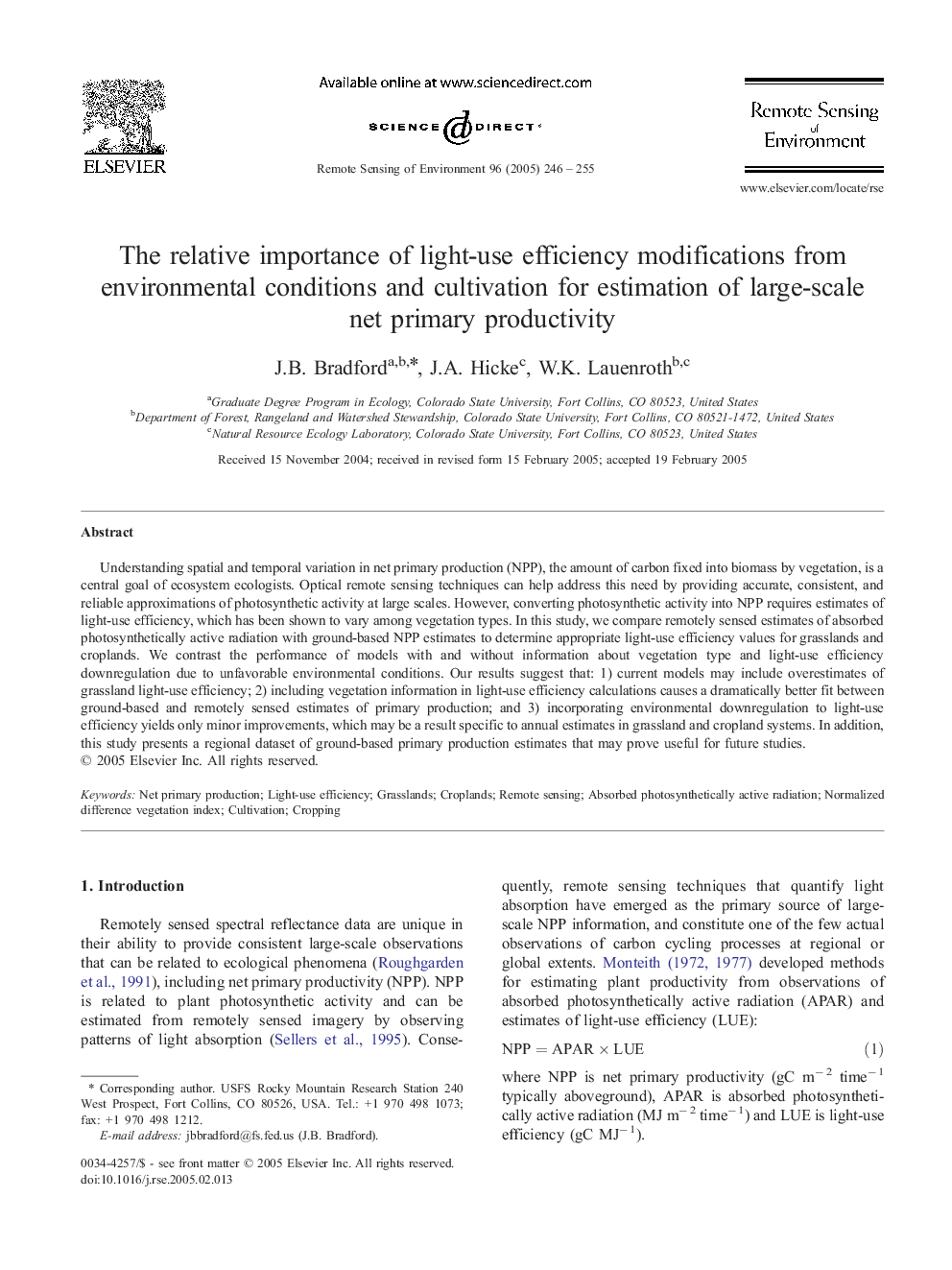| Article ID | Journal | Published Year | Pages | File Type |
|---|---|---|---|---|
| 10114228 | Remote Sensing of Environment | 2005 | 10 Pages |
Abstract
Understanding spatial and temporal variation in net primary production (NPP), the amount of carbon fixed into biomass by vegetation, is a central goal of ecosystem ecologists. Optical remote sensing techniques can help address this need by providing accurate, consistent, and reliable approximations of photosynthetic activity at large scales. However, converting photosynthetic activity into NPP requires estimates of light-use efficiency, which has been shown to vary among vegetation types. In this study, we compare remotely sensed estimates of absorbed photosynthetically active radiation with ground-based NPP estimates to determine appropriate light-use efficiency values for grasslands and croplands. We contrast the performance of models with and without information about vegetation type and light-use efficiency downregulation due to unfavorable environmental conditions. Our results suggest that: 1) current models may include overestimates of grassland light-use efficiency; 2) including vegetation information in light-use efficiency calculations causes a dramatically better fit between ground-based and remotely sensed estimates of primary production; and 3) incorporating environmental downregulation to light-use efficiency yields only minor improvements, which may be a result specific to annual estimates in grassland and cropland systems. In addition, this study presents a regional dataset of ground-based primary production estimates that may prove useful for future studies.
Keywords
Related Topics
Physical Sciences and Engineering
Earth and Planetary Sciences
Computers in Earth Sciences
Authors
J.B. Bradford, J.A. Hicke, W.K. Lauenroth,
